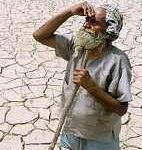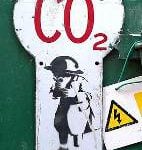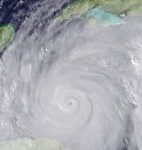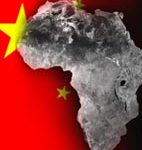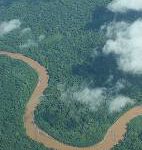The Living Planet Report 2006 describes the changing state of global biodiversity and the pressure on the biosphere arising from human consumption of natural resources. It is built around two indicators: the Living Planet Index, which reflects the health of the planet’s ecosystems; and the Ecological Footprint, which shows the extent of human demand on these ecosystems. These measures are tracked over several decades to reveal past trends, then three scenarios explore what might lie ahead. The scenarios show how the choices we make might lead to a sustainable society living in harmony with robust ecosystems, or to the collapse of these same ecosystems, resulting in a permanent loss of biodiversity and erosion of the planet’s ability to support people.
The Living Planet Index measures trends in the earth’s biological diversity. It tracks populations of 1,313 vertebrate species – fish, amphibians, reptiles, birds, mammals – from all around the world. Separate indices are produced for terrestrial, marine, and freshwater species, and the three trends are then averaged to create an aggregated index. Although vertebrates represent only a fraction of known species, it is assumed that trends in their populations are typical of biodiversity overall. By tracking wild species, the Living Planet Index is also monitoring the health of ecosystems. Between 1970 and 2003, the index fell by about 30%. This global trend suggests that we are degrading natural ecosystems at a rate unprecedented in human history.
Biodiversity suffers when the biosphere’s productivity cannot keep pace with human consumption and waste generation. The Ecological Footprint tracks this in terms of the area of biologically productive land and water needed to provide ecological resources and services – food, fibre, and timber, land on which to build, and land to absorb carbon dioxide (CO2) released by burning fossil fuels. The earth’s biocapacity is the amount of biologically productive area – cropland, pasture, forest, and fisheries – that is available to meet humanity’s needs. Freshwater consumption is not included in the Ecological Footprint; rather it is addressed in a separate section of the report.
Since the late 1980s, we have been in overshoot – the Ecological Footprint has exceeded the earth’s biocapacity – as of 2003 by about 25 per cent. Effectively, the earth’s regenerative capacity can no longer keep up with demand – people are turning resources into waste faster than nature can turn waste back into resources.
Humanity is no longer living off nature’s interest, but drawing down its capital. This growing pressure on ecosystems is causing habitat destruction or degradation and permanent loss of productivity, threatening both biodiversity and human well-being.
For how long will this be possible? A moderate business-as-usual scenario, based on United Nations projections showing slow, steady growth of economies and populations, suggests that by midcentury, humanity’s demand on nature will be twice the biosphere’s productive capacity. At this level of ecological deficit, exhaustion of ecological assets and large-scale ecosystem collapse become increasingly likely.
Two different paths leading to sustainability are also explored. One entails a slow shift from our current route, the other a more rapid transition to sustainability. The Ecological Footprint allows us to estimate the cumulative ecological deficit that will accrue under each of these scenarios: the larger this ecological debt, and the longer it persists, the greater the risk of damage to the planet. This risk must be considered in concert with the economic costs and potential social disruptions associated with each path.
Moving towards sustainability depends on significant action now. Population size changes slowly, and human-made capital – homes, cars, roads, factories, or power plants – can last for many decades. This implies that policy and investment decisions made today will continue to determine our resource demand throughout much of the 21st century.
As the Living Planet Index shows, human pressure is already threatening many of the biosphere’s assets. Even moderate “business as usual” is likely to accelerate these negative impacts. And given the slow response of many biological systems, there is likely to be a considerable time lag before ecosystems benefit significantly from people’s positive actions.
We share the earth with 5–10 million species or more. By choosing how much of the planet’s biocapacity we appropriate, we determine how much is left for their use. To maintain biodiversity, it is essential that a part of the biosphere’s productive capacity is reserved for the survival of other species, and that this share is split between all biogeographic realms and major biomes.
To manage the transition to sustainability, we need measures that demonstrate where we have been, where we are today, and how far we still have to go. The Living Planet
Index and the Ecological Footprint help to establish baselines, set targets, and monitor achievements and failures. Such vital information can stimulate the creativity and innovation required to address humanity’s biggest challenge: how can we live well while sustaining the planet’s other species and living within the capacity of one earth.
The Living Planet Index is a measure of the state of the world’s biodiversity based on trends from 1970 to 2003 in over 3,600 populations of more than 1,300 vertebrate species from around the world. It is calculated as the average of three separate indices that measure trends in populations of 695 terrestrial species, 274 marine species, and 344 freshwater species.
The index shows an overall decline of around 30% over the 33-year period, as do each of the terrestrial, marine, and freshwater indices individually. The decline in the indices, and in particular the freshwater index, is less than in previous reports, because the indices have been aggregated in a different way, designed to reduce the degree of uncertainty around them
No attempt is made to select species on the basis of geography, ecology, or taxonomy, so the index dataset contains more population trends from well researched groups, especially birds, and well-studied regions, particularly Europe and North America. In compensation, temperate and tropical regions are given equal weight (with equal weight to each species in each region) within the terrestrial and freshwater indices, and to ocean basins within the marine index.
The footprint of a country includes all the cropland, grazing land, forest, and fishing grounds required to produce the food, fibre, and timber it consumes, to absorb the wastes emitted in generating the energy it uses, and to provide space for its infrastructure.
People consume resources and ecological services from all over the world, so their footprint is the sum of these areas, wherever they may be on the planet.
Humanity’s footprint first grew larger than global biocapacity in the 1980s; this overshoot has been increasing every year since, with demand exceeding supply by about 25% in 2003. This means that it took approximately a year and three months for the earth to produce the ecological resources we used in that year.
Separating the Ecological Footprint into its individual components demonstrates how each one contributes to humanity’s overall demand on the planet. Figure 19 tracks these components in constant 2003 global hectares, which adjust for annual changes in the productivity of an average hectare. This makes it possible to compare absolute levels of demand over time. The CO2 footprint, from the use of fossil fuels, was the fastest growing component, increasing more than ninefold from 1961 to 2003.
How is it possible for an economy to continue operating in overshoot? Over time, the earth builds up ecological assets, like forests and fisheries. These accumulated stocks can, for a limited period, be harvested faster than they regenerate. CO2 can also be emitted into the atmosphere faster than it is removed, accumulating over time.
For three decades now we have been in overshoot, drawing down these assets and increasing the amount of CO2 in the air. We cannot remain in overshoot much longer without depleting the planet’s biological resources and interfering with its long-term ability to renew them.
